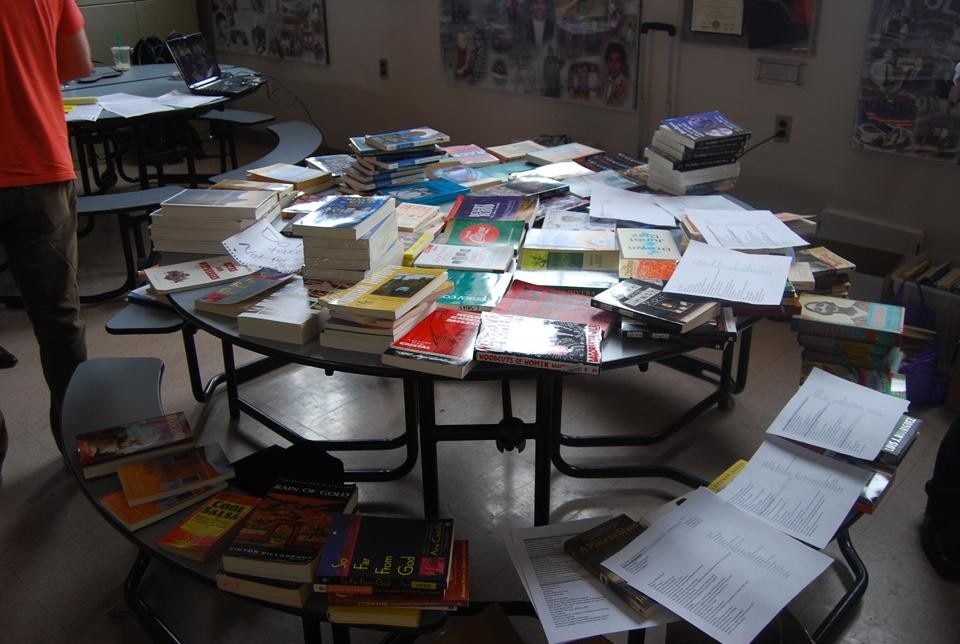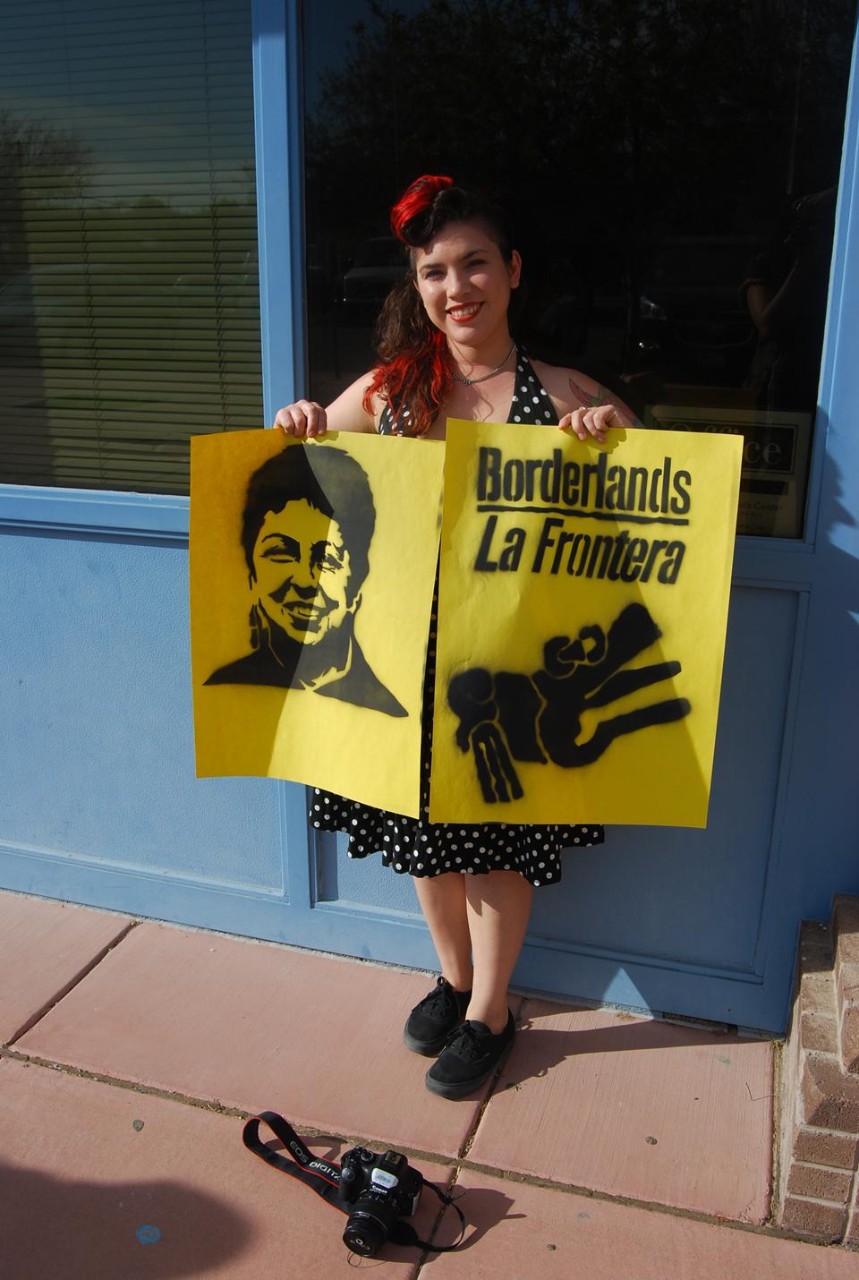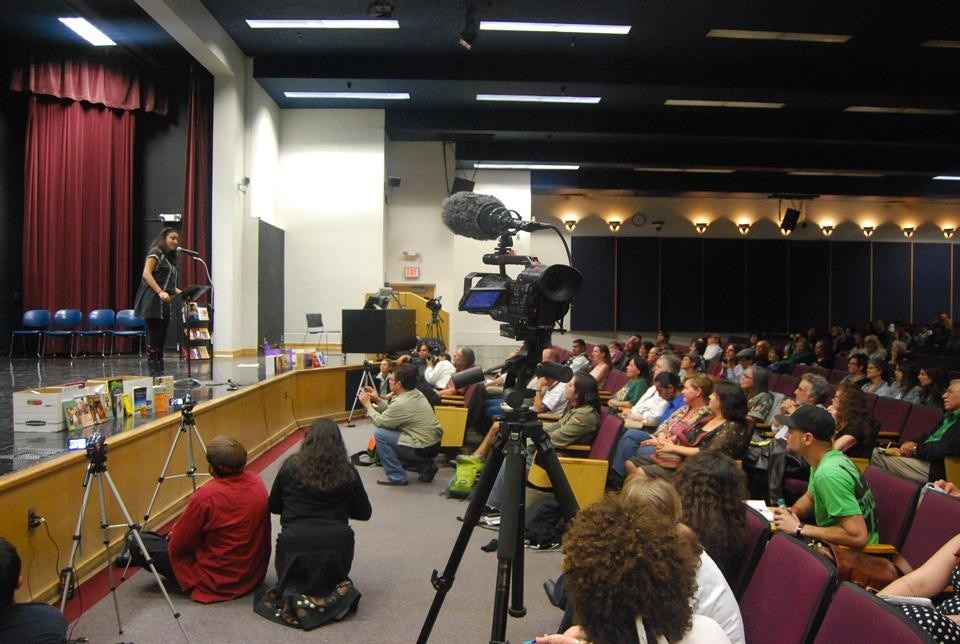On our fifth day on the road — after San Antonio, El Paso, Albuquerque and Mesilla —, we finally reach our last and most important destination: Tucson, Arizona, where the school district decided to ban Mexican-American Studies from high schools, along with a number of Chicano and world literature classics.
"Migra sheriffs will never see so many Mexicans to arrest all together," jokes Galveston educator and poet Lupe Mendez. There is some tension on the librotraficantes bus; crossing this region only brings back bad memories for many. Two years ago, the approval of the dreaded SB 1070, the harshest anti-immigration law on the planet caused nationwide scandal. And a number of caravanners had at least one dark-skinned relative arrested on these roads, only because he or she wasn't carrying a photo ID. From immemorial times, Arizona has had the reputation of a Hate State — obsessed with taxes and illegal aliens, stronghold of the darkest extremist conservatism, hatred for everything "public", with a longing for Reaganomics, and a touch of Mormon-brand creationism.
From an economic standpoint, Arizona has been on the verge of bankruptcy since 2010, but the idea of raising taxes is considered blasphemy by Republicans, who prefer to shift emphasis to the defence of the ultra-militarized border and of Americanism in the schools. If this diabolical Tea Party laboratory were to become a national model — as Ken Silverstein wrote in Harper's — "the country might start to resemble the right-wing desert that Arizona has become."

Twenty-eight year-old high school teacher Michelle Fealk tells me that Tucson residents are traditionally quite moderate. Immigration has brought new votes to the Democrats. The rivalry between progressive Tucson and conservative Phoenix is well known. There is a relaxed and vaguely familiar atmosphere with the art galleries and hipster bars in the 4th Avenue area.

Why doesn't the ethnic and cultural diversity of this area affect politics? Why don't migrant children count? "There is no cohesion in the Latin community," explains Tony Diaz, the soul of librotraficantes. "We are too reactive and not proactive enough. This will require a "phase 2", that can go beyond this "testimonial" trip, to help overcome distances by improving collaboration among the various political and cultural associations that until now have been so scattered and disconnected."
Two years ago, the approval of the dreaded SB 1070, the harshest anti-immigration law on the planet caused nationwide scandal. And a number of caravanners had at least one dark-skinned relative arrested on these roads, only because he or she wasn't carrying a photo ID
1.jpg.foto.rmedium.jpg)
The home of the Canadian couchsurfer who hosted me for two nights is a mixture of native and Mediterranean styles: a single-family structure with a small front yard, decorated with desert motifs — cactus, sand, fence — and a small patio with chickens and rabbits in the back. Inside, a curious mixture of materials in the walls: stone, brick and wood. The windows are tall to offer a better view of the magnificent mountains, sky and desert. A detail: in one of the most fear-ridden states, the owner never locks the door.


Like desert plants that, after having reached maturity, detach from their roots to become tumbleweeds, pushed by the wind so they can spread their seeds somewhere else.


